What is an ACL injury?
ACL or anterior cruciate ligament is one of four knee ligaments that are critical to the stability of the knee joint. ACL is made of tough fibrous material and functions to control excessive knee motion by limiting joint mobility. It also helps to prevent hyperextension of the knee.
One of the most common problems involving the knee joint is an anterior cruciate ligament injury or ACL tear or sprain. Of the four major knee ligaments of the knee, an ACL injury or rupture is the most debilitating knee ligament injury.
Normal knee anatomy front view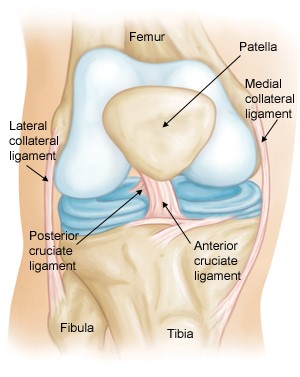 |
 |
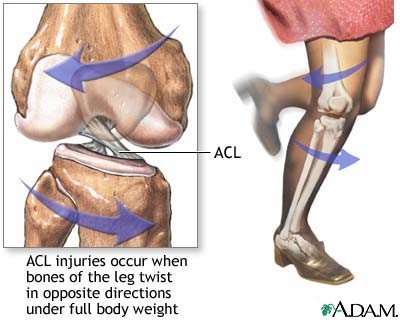 |
Source : http://orthoinfo.aaos.org.com Source: http://www.englewoodortho.com
Description of an ACL injury
About half of all injuries to the anterior cruciate ligament occur along with damage to other structures in the knee, such as articular cartilage, meniscus, or other ligaments.
Injured ligaments are considered “sprains” and are graded on a severity scale.
- Grade 1 Sprains. The ligament is mildly damaged in a Grade 1 Sprain. It has been slightly stretched, but is still able to help keep the knee joint stable.
- Grade 2 Sprains. A Grade 2 Sprain stretches the ligament to the point where it becomes loose. This is often referred to as a partial tear of the ligament.
- Grade 3 Sprains. This type of sprain is most commonly referred to as a complete tear of the ligament. The ligament has been split into two pieces, and the knee joint is unstable.
Partial tears of the anterior cruciate ligament are rare; most ACL injuries are complete or near complete tears.
What are the causes of an ACL injury?
An ACL injury is usually a sports-related knee injury. About 80% of sports-related ACL tears are “non-contact” injuries.
The anterior cruciate ligament or ACL can be injured in several ways :
- Changing direction rapidly.
- Stopping suddenly.
- Slowing down while running.
- Landing from a jump incorrectly.
- Direct contact or collision, such as a football tackle.
What are the sign and symptoms of an ACL injury?
When you injure your ACL, you might hear a “popping” noise and you may feel your knee give out from under you. Other typical symptoms include:
- Pain with swelling
- Loss of full range of motion
- Tenderness along the joint line
- Discomfort while walking
What are the diagnosis for an ACL injury?
Most ligament injuries can be diagnosed with a thorough physical examination of the knee especially by looking for signs of ACL ligament instability usually by comparing the structures of the injured knee to the non-injured knee.
- Special ACL tests: place stress on the anterior cruciate ligament, and can detect an ACL tear or rupture.
- X-rays – can show whether the injury is associated with a broken bone.
- Magnetic resonance imaging (MRI) scan – better images of soft tissues like the anterior cruciate ligament.
How can Physiotherapy help?
Physiotherapy treatment will helps to :
- Reduce pain and inflammation.
- Normalise joint range of motion.
- Strengthen the muscles of the knee, hip and lower leg.
- Improve patellofemoral (knee cap) alignment.
- Improve your proprioception, agility and balance.
- Improve your technique and function eg walking, running, squatting, hopping and landing.
- Minimise the chance of reinjury.
What is the physiotherapy management for an ACL injury?
1. Modalities
Heat and cold therapy is applied to enhance relaxation and reduces pain. It is important to use ice after exercise and after any activity that causes discomfort. Pulsed electrical stimulation can also be used to relieve the pain. Electric stimulation will helps to improve the blood circulation, thus enhancing the healing process and reducing any swelling or discomfort.
2. Exercise
Stretching, mobility and strengthening exercises need to be done regularly. Exercises will restore the movement and maintain the adequate strength and stability of the knee joint.
Perform all exercises 3-4 times daily.
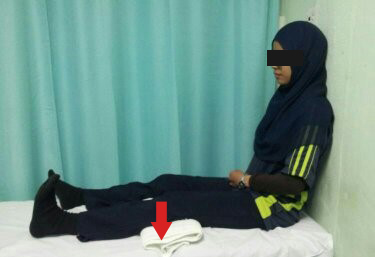 |
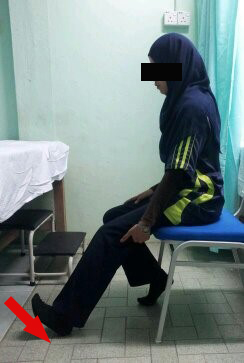 |
| Static Quadricep contraction (Left leg)
1. Position : Long sitting against the wall 2. Instruction : Tighten the muscles at the front of the thigh (quadriceps) by pushing your knee down into a towel, hold for 5 secs, 10 repetitions |
Static Hamstring contraction (Left leg)
1. Position : Sitting with knee bend 45 degree 2. Instruction : Press your heel into the floor, tightening the back of your thigh (hamstrings), hold for 5 secs, repeat 10 times |
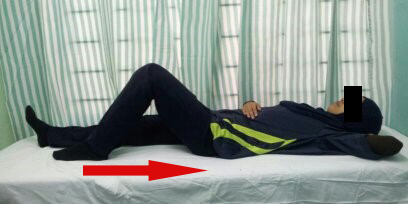 |
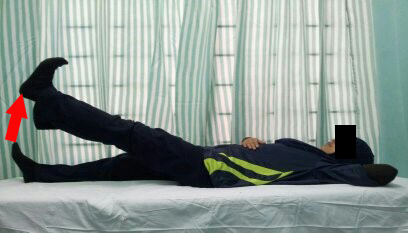 |
| Heel Slide
1. Position : Lying 2. Instruction : Slide your heel backward to bend the knee, hold 5 secs, |
Straight Leg Lift
1. Position : Lying 2. Instruction : Keep knees straight, lift your |
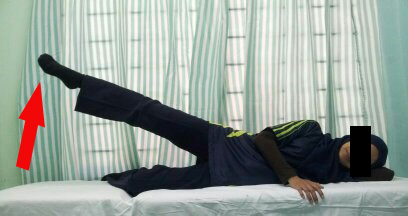 |
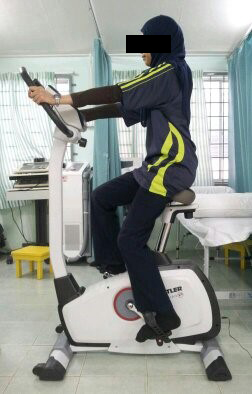 |
| Straight Leg Lift to the side
1. Position : Lie on your unaffected side 2. Instruction : Keep knee straight, raise the affected limb to 45 degree |
Static Cycling
1. Position : Sitting 2. Instruction : Pedal all the way round slowly with no resistance |
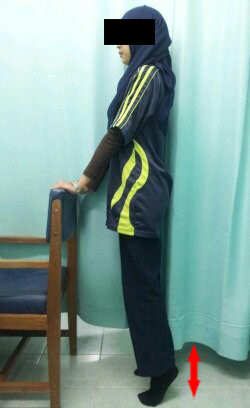 |
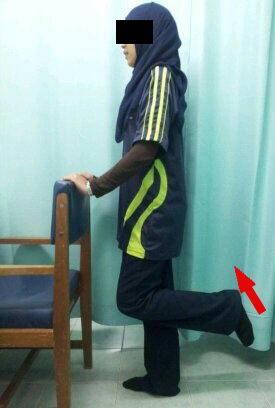 |
| Standing Toe Raise
1. Position : Standing with hands 2. Instruction : Raise up the heels keeping |
Standing Hamstring Curl
1. Position : Standing with hands 2. Instruction : Bend the affected leg at the |
Source: Unit Fisioterapi Hospital Raja Perempuan Zainab II, Kota Bharu
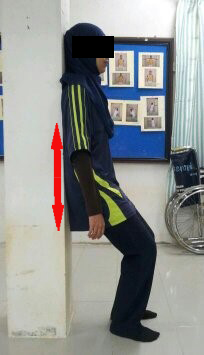 |
| Wall Slide
1. Position : Standing upright with your back and buttock 2. Instruction : Slowly lower your hips by bending the knees and slide |
| Source : Unit Fisioterapi Hospital Raja Perempuan Zainab II, Kota Bharu |
3. Advice to patient
Avoid excessive movement and massage or stress to the injured knee, rest and immobilized.
Always strengthen your muscles of the knee and do not try to play or work through the pain.
Remember to develop strength of the opposing muscle groups of the knee.
How can an ACL injury be prevented?
The best way to prevent ACL injuries is to stretch and strengthen the leg muscles, especially the front and back muscles of the thigh (quadriceps and hamstrings).
You may help prevent ACL injuries if you :
- Avoid wearing shoes with cleat in contact sports.
- Avoid wearing high heeled shoes.
- Avoid sports that involve lots of twisting and contact.
References
- John Miller (2015) ACL injury: What is ACL injury? http://physioworks.com.au/ acl-anterior-cruciate-ligament-injuries
- Stuart J. Fisher (2014) Anterior Cruciate Ligament Injuries http://orthoinfo.aaos.org.com
- Amy E, Micheo W (2008) Anterior Cruciate Ligament(ACL) Injuries-Prevention http://www.webmed.com
- Brad Walker (2007) ACL Injury and ACL Tear – Treatment and Rehabilitation http://www.stretchcoach.com/articles/acl-injury
Source Image
- (2013) http://www.englewoodortho.com/ Retrieved August 18, 2015.
- (2014) http://orthoinfo.aaos.org.com/ Retrieved August 19, 2015
- (2015) Unit Fisioterapi, Hospital Raja Perempuan Zainab II, Kota Bharu. Retrieved August 20, 2015
| Last Reviewed | : | 18 January 2016 |
| Writer | : | Halimah binti Hashim |
| Translator | : | Halimah binti Hashim |
| Accreditor | : | Daaljit Singh Harbachan Singh |







